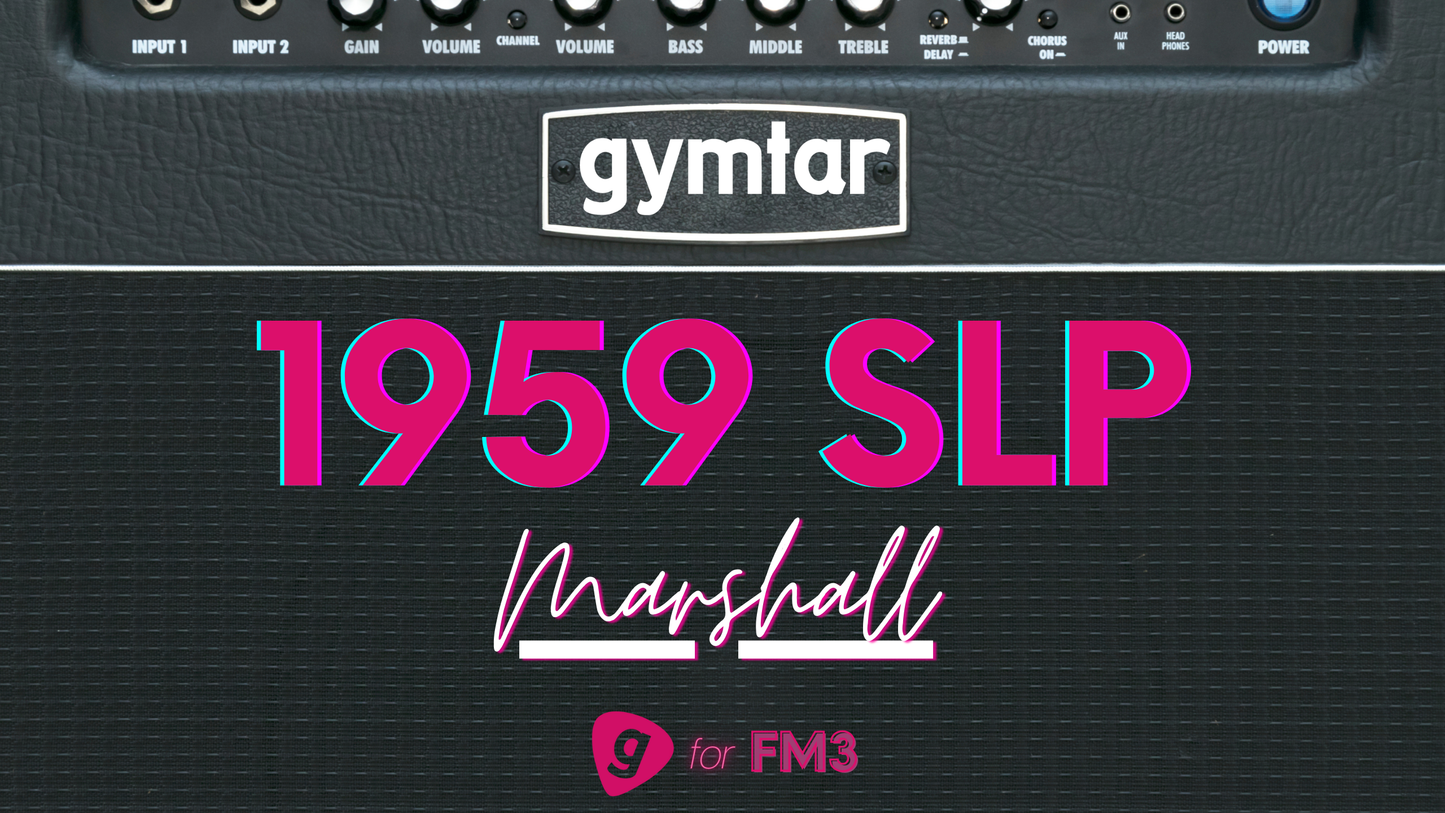Gymtar
FM3/FM9/AXE-FX III Patch based on Marshall Super Lead Model 1959 (1959 SLP)
FM3/FM9/AXE-FX III Patch based on Marshall Super Lead Model 1959 (1959 SLP)
Couldn't load pickup availability
FM3/FM9/AXE-FX III Patch based on Marshall Super Lead Model 1959 (1959 SLP)
Few amplifiers have had as profound an impact on rock music as the Marshall Super Lead Model 1959. Introduced in the mid-1960s, this 100-watt tube head became the sonic foundation for an entire generation of guitar-driven music, defining the raw, overdriven sound that would come to characterize hard rock and heavy metal throughout the 1970s and beyond.
The Model 1959, also known simply as the Super Lead, was Marshall’s answer to the louder stage volumes and more aggressive tones that players were beginning to demand as rock music evolved. While earlier amplifiers struggled to stay clean or broke up in less-than-musical ways when pushed, the Super Lead embraced distortion—but with a character that was both powerful and musical. Its thick, crunchy midrange, dynamic response, and sheer volume capability set a new benchmark for what an amp could deliver on a large stage.
At its heart, the Super Lead was a British reinterpretation of the American sound. It was based loosely on the Fender Bassman circuit, but with key modifications: higher voltage in the preamp, a more aggressive tone stack, and EL34 power tubes (as opposed to 6L6s), which gave the amp its distinctly British voicing—tighter lows, pronounced upper mids, and a slightly compressed feel that responded beautifully to heavy playing.
The amp featured two channels, typically labeled “High Treble” and “Normal,” each with its own volume control. These could be “jumped” using a short patch cable, allowing players to blend the characteristics of both channels—a trick that became part of the amp’s legendary status. With only a simple three-band EQ and presence control, the layout was straightforward, but the tone was anything but basic. When turned up, the Super Lead would roar to life, delivering the saturated, harmonically rich overdrive that became synonymous with names like Jimi Hendrix, Jimmy Page, Pete Townshend, and later, Slash and Yngwie Malmsteen.
More than just an amp, the Marshall 1959 Super Lead is a symbol. It represents the moment guitar tone broke free from restraint and became something elemental—loud, expressive, and rebellious. Even today, its sound continues to inspire musicians seeking that unmistakable combination of aggression, dynamics, and vintage warmth that only a true Plexi can deliver.
The patch contains 6 scenes, although in the video you find 3, since the "Lead" scenes are identical to the scenes "Rhythm", simply with the addition of boosters and delays.
Scene 1: Jumped Crunch Rhythm
Scene 2: Jumped Lead
Scene 3: Normal Crunch
Scene 4: Normal Lead
Scene 5: Treble Rhythm
Scene 6: Treble Lead
Effects : drive, delay, reverb
Share



